
Powerlifting vs Weightlifting: Best Practices and Key Differences
Mark PasayShare
Powerlifting vs weightlifting: what’s the difference? Simply put, powerlifting focuses on three main lifts to build maximal strength, while weightlifting concentrates on two explosive lifts to enhance power and technique.
This article will explore these distinctions, outline training methods, and help you decide which sport suits your goals.
Understanding Powerlifting and Weightlifting
Powerlifting and weightlifting are recognized as major strength sports, but despite sharing the common ground of lifting heavy weights, they are distinct in many ways.
Powerlifting focuses on maximizing strength through three specific lifts: squat, bench press, and deadlift. Weightlifting, on the other hand, revolves around the snatch and the clean & jerk, emphasizing explosive power and technique.
These two sports are often confused due to their similarities in strength training, but understanding their differences is crucial for anyone serious about strength training. Knowing what each sport entails will help you decide which aligns with your fitness goals and interests.
What is Powerlifting?
Powerlifting is a strength sport that revolves around maximizing strength across three key lifts: the squat, bench press, and deadlift. These lifts are performed in a competitive setting where the goal is to lift as much weight as possible in each exercise. The total weight lifted across these three exercises is crucial. It determines the success of the competitor.
The International Powerlifting Federation sets the rules and standards for powerlifting competitions, ensuring consistency and fairness. Powerlifting training focuses on building maximal strength through heavy weights and low repetitions, making it a straightforward yet demanding sport.
What is Weightlifting?
Weightlifting, often referred to as Olympic weightlifting, involves two main lifts: the snatch and the clean & jerk. These Olympic lifts are performed with the aim of lifting the maximum weight overhead in a single, fluid motion. The snatch is a single, continuous movement, while the clean & jerk involves two distinct phases: lifting the barbell to the chest and then overhead.
Weightlifting competitions are governed by the International Weightlifting Federation (IWF), which sets the rules and standards. This sport requires not only raw strength but also agility, technique, and explosive power, particularly in executing the snatch and clean & jerk.
Core Lifts in Powerlifting vs Weightlifting
The core lifts in powerlifting and weightlifting are fundamental to each sport’s training and competitions. Powerlifting emphasizes the squat, bench press, and deadlift, each targeting different muscle groups and contributing to overall strength. Weightlifting focuses on the snatch and the clean & jerk, complex movements requiring precision and explosive power.
Understanding these core lifts helps us appreciate the unique demands of each sport.
The Squat
The squat is a cornerstone of powerlifting, testing an athlete’s leg strength, technique, and mental grit. It primarily targets the quadriceps, hamstrings, glutes, and core muscles, making it a comprehensive lower-body exercise. Proper form is crucial, with the universal criterion being that the hip crease must go below the kneecap depth, ensuring a valid lift.
In powerlifting competitions, the squat is one of the three main lifts performed, and it requires balance, control, and maintaining tension throughout the lift. This lift is essential for building leg strength and coordination, which are pivotal for overall performance in powerlifting.
The Bench Press
The bench press is a critical test of upper body strength in powerlifting. During competitions, the barbell must touch the chest and pause before being pressed, requiring precise control and technique. Effective execution involves a strategic arch in the back, a controlled bar path, and a leg drive to maximize the lift.
This lift targets the chest, shoulders, and triceps and is a staple in powerlifting competitions. The bench press is not only about raw strength but also about mastering techniques to safely and effectively lift heavy weights.
The Deadlift
The deadlift, often regarded as the ultimate test of raw strength, is the third competition movement in powerlifting. To perform a deadlift, the athlete must lift the barbell from the ground to a standing position, fully extending the hips and knees. This lift engages grip strength, the back, legs, and overall endurance, making it a comprehensive strength exercise.
Success in the deadlift requires proper technique, timing, and mental determination. It is mentally demanding, as lifting heavy weights from the ground tests physical and mental fortitude.
The Snatch
The snatch is one of the two main lifts in Olympic weightlifting, characterized by its single, explosive movement from ground to overhead. This lift requires speed, power, flexibility, and impeccable technique, making it one of the most challenging movements in weightlifting.
To execute a snatch, you lift the barbell from the floor. This is done in one continuous motion until it is overhead. This lift tests an athlete’s coordination, timing, and body awareness, as well as their explosive strength and flexibility.
The Clean & Jerk
The clean & jerk consists of two phases: the clean, where the barbell is lifted to the shoulders, and the jerk, propelled overhead. This lift requires raw power and technical precision, making it a cornerstone of Olympic weightlifting.
In the clean phase, the athlete pulls the barbell onto the shoulders and catches it in a front squat position. The jerk phase involves standing up and pushing the barbell from the shoulders to the head, requiring explosive power and coordination.
Training Approaches in Powerlifting and Weightlifting
Training approaches in powerlifting and weightlifting differ significantly due to their distinct focuses. Powerlifting emphasizes maximum strength through heavy weights and low repetitions, while weightlifting prioritizes explosive power and technique with lighter weights and higher repetitions.
Grasping these training approaches is key to excelling in either sport.
Powerlifting Training
Powerlifting training focuses on maximizing one-rep max performance in the squat, bench press, and deadlift. This involves low repetitions and high intensity to build maximal strength, with accessory exercises targeting weak points relevant to competition lifts. Recovery and injury prevention are crucial, ensuring athletes perform their best during powerlifting competitions.
A typical powerlifting program includes regular sets of one to three repetitions in the core lifts, progressively increasing the weights. This structured approach helps powerlifters push their limits and achieve peak performance.
Weightlifting Training
Weightlifting training emphasizes developing mobility, speed, technique, and explosive power. Typical exercises include heavy snatches, clean & jerks, and variations of these classic lifts, along with supplemental exercises to enhance overall performance. Training sessions are frequent, often occurring four to six times per week, to optimize strength and skill development.
The technique is paramount in weightlifting training, as proper form enhances performance and safety. This emphasis on technique requires dedicated practice and often the guidance of a skilled coach to master the complex movements involved in weightlifting.
Competition Structure and Rules
Powerlifting and weightlifting competitions have distinct structures and rules, reflecting the unique demands of each sport. Powerlifting competitions allow three attempts for each lift (squat, bench press, and deadlift), with the total weight lifted determining the winner.
Weightlifting competitions, regulated by the International Weightlifting Federation (IWF), involve the snatch and the clean & jerk, with athletes having six attempts to achieve their best lifts.
Powerlifting Competitions
Powerlifting competitions are organized under the International Powerlifting Federation (IPF), which sets the rules and standards for competitions. Competitors are grouped into flights based on relative strength and desired weight, making the competition fairer. Mental toughness and determination are essential, as the sport requires intense focus and resilience to achieve maximal lifts.
Athletes must use specific gear, including a lifting suit, weightlifting belt, knee sleeves, wrist wraps, and approved shoes. Competitions have different divisions based on the lifting equipment used, with ‘raw’ divisions allowing only minimal support gear.
Related Products
Weightlifting Competitions
Weightlifting competitions are governed by the International Weightlifting Federation (IWF), which centralizes the rules and standards for the sport. Competitors perform two lifts: the snatch and the clean & jerk, with each athlete having six attempts—three for each lift. The highest successful lifts are combined to determine the winner based on the total weight lifted.
Competitors must declare their opening weights ahead of time, and subsequent weights depend on their success in previous attempts. Weightlifters must wear a singlet and weightlifting shoes, and they may use optional accessories such as belts and wrist wraps. The sport’s focus on technique means that weightlifting misses are common, especially under competition pressure. Weight classes are an essential aspect of the competition.
Key Differences Between Powerlifting and Weightlifting
Powerlifting and weightlifting are both strength sports that have distinct differences in their goals, techniques, and physical demands. Powerlifting focuses on building maximal muscle mass and strength through three specific lifts, while weightlifting emphasizes explosive power and technique in two primary lifts.
Understanding these key differences can help athletes choose the sport that best aligns with their fitness goals.
Goals and Objectives
Powerlifting aims to build maximum muscle mass and increase strength through the squat, bench press, and deadlift. The main focus is on maximizing strength through simpler exercises, making it more accessible for those looking to push their physical limits. In powerlifting, success is determined by the total weight lifted across three exercises. This combined total is used to evaluate performance.
In contrast, weightlifting emphasizes explosive power and refined technique in the snatch and clean & jerk. The objective is to lift heavy weights overhead in a single, fluid motion, highlighting the key differences between the two sports. This sport is ideal for those who enjoy complex movements and the challenge of mastering precise techniques.
Techniques and Movements
Powerlifters typically perform three main lifts: the squat, bench press, and deadlift, focusing on maximum strength. These lifts are performed at a slower pace, especially during maximal attempts, emphasizing controlled power over speed. The techniques involved in powerlifting are relatively straightforward, making it easier for beginners to learn and progress.
Weightlifting, on the other hand, consists of two primary movements, the snatch and the clean & jerk, which require explosive power and high levels of technique. These complex movements have a steeper learning curve, requiring constant focus on form and technique. The dynamic nature of weightlifting movements makes them mentally engaging and physically demanding.
Physical and Mental Demands
Powerlifting emphasizes raw strength and maximal lifts, engaging nearly every muscle group, especially in the deadlift. This sport requires not only physical strength but also mental resilience and strategic planning. Powerlifters develop discipline, mental toughness, and the ability to push through physical and mental barriers.
Weightlifting demands greater flexibility and mobility compared to powerlifting, particularly in the joints involved in the snatch and clean & jerk. The jerk phase of the clean & jerk requires balance, coordination, and explosive power. Weightlifting is a test of physical ability and strategy, as athletes must excel in both lifts to achieve a competitive total.
Choosing Between Powerlifting and Weightlifting
Deciding between powerlifting and weightlifting involves assessing your physical traits, training preferences, and competition goals. Those interested in maximal strength and simpler training methods may lean towards powerlifting, while individuals who enjoy complex movements and explosive power might find weightlifting more appealing.
Who Should Consider Powerlifting?
Individuals seeking raw strength and a straightforward training approach are ideally suited for powerlifting. This sport attracts those who prefer focusing on maximal strength through heavy lifts and simpler exercises. Powerlifting is generally more accessible to beginners due to its less complex technique requirements.
However, unlike powerlifting, the sport might not be suitable for those primarily looking to improve their appearance or prefer variety in their workouts. The sport demands dedication to specific lifts and consistent training to achieve significant strength gains.
Who Should Consider Weightlifting?
Weightlifting is well-suited for individuals who enjoy a combination of strength, agility, and coordination. This sport requires mastering complex movements and emphasizes explosive power, appealing to those who enjoy technical challenges. Weightlifting training can be time-consuming, requiring lengthy sessions to develop the necessary skills.
Access to specialized equipment and coaching is essential for weightlifting, which may not be readily available to everyone. Those who appreciate the intricacies of technique and the thrill of lifting heavy weights overhead will find weightlifting particularly rewarding.
Getting Started with Powerlifting or Weightlifting
Starting with either powerlifting or weightlifting requires proper coaching, technique, and programming. Both sports utilize similar equipment like barbells, kettlebells, and dumbbells, but the specifics differ based on the sport.
Understanding the essential equipment needed for each sport will help you prepare and succeed in your training journey.
Essential Equipment for Powerlifting
To start powerlifting, essential equipment includes a barbell, weights, and a power rack. A powerlifting belt is vital for providing support and reducing the risk of injury when lifting heavy weights. In addition to these basics, wrist wraps stabilize the wrist joints during heavy lifts, enhancing performance and safety.
Supportive gear like knee wraps can enhance stability during lifts, making them beneficial for powerlifters aiming to lift progressively heavier weights. Having the right equipment ensures that you can train effectively and safely, focusing on building maximal strength.
Essential Equipment for Weightlifting
Weightlifting requires a specialized barbell, bumper plates, and a platform. Bumper plates are designed to absorb impact when dropped, making them essential for the dynamic movements in Olympic weightlifting. These items are crucial for performing the snatch and clean & jerk safely and effectively.
Many CrossFit gyms are equipped with the necessary gear for Olympic lifting, providing a convenient option for those looking to start weightlifting. Access to this specialized equipment and a proper training environment are key to developing the skills required for weightlifting.
Summary
In summary, powerlifting and weightlifting are two distinct yet complementary strength sports. Powerlifting focuses on maximizing strength through the squat, bench press, and deadlift, while weightlifting emphasizes explosive power and technique in the snatch and clean & jerk. Each sport has unique training methods, competition structures, and physical demands.
As you embark on your strength training journey, consider your personal goals, physical traits, and training preferences. Whether you choose the straightforward path of powerlifting or the technical challenge of weightlifting, both sports offer rewarding experiences and the opportunity to push your physical and mental limits. Embrace the journey, stay dedicated, and enjoy becoming stronger.
Frequently Asked Questions
What are the main differences between powerlifting and weightlifting?
The main difference is that powerlifting targets maximal strength through the squat, bench press, and deadlift, whereas weightlifting emphasizes explosive power and technique with the snatch and clean & jerk. Each discipline focuses on different aspects of strength training.
Which sport is better for beginners?
Powerlifting is better for beginners because its simpler technique requirements and straightforward exercises make it more accessible for those just starting.
What kind of equipment do I need to start powerlifting?
To start powerlifting, you need a barbell, weights, a power rack, a powerlifting belt, wrist wraps, and knee wraps for additional support. Investing in this essential gear will enhance your stability and performance.
How often should I train if I want to excel in weightlifting?
To excel in weightlifting, aim for training four to six times per week, focusing on heavy lifts and supplemental exercises to optimize your strength and skill development.
What are the physical and mental demands of powerlifting?
Powerlifting demands significant physical strength and mental resilience, requiring not only raw power but also discipline and strategic planning. Successfully navigating these challenges leads to greater overall athletic performance and personal growth.

Click Here to Learn More About the Rip Toned Wrist Wraps and choose the right lifting style for you.
Related Posts
-

POWERLIFTING THE RIGHT WAY
-

Unlock Your Strength Potential: Conquer Weak Grip Strength Now
-
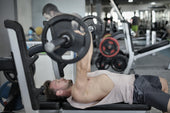
Bench Press to Success - Mastering your form
-

5 Tips for Women to Build Lean Muscle Tone in 2024
-

How to Get the Most Out of a Lifting Session
-
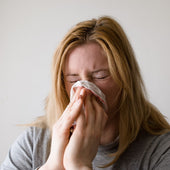
Working Out Under the Weather
-

The Lesser-known Benefits of Weightlifting
-

How Weight Training Supports Immune Health
-

The History of Weightlifting
-

Rest up to build up
-

4 Tips to Improve Lifting Gains The Right Way
-

4 Tips to Prevent Training Injuries
-
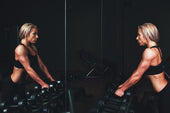
Top 3 Work Out Myths EXPOSED!!
-

Common Lifting Injuries (And How to Avoid Them)
-

Hit the Gym or Stay at Home?
-

Weightlifting Benefits – Many Health Benefits for Men and Women
-

How Many Times a Week Should I Deadlift? A Guide to Deadlift Frequency and Programming
-

Can Deadlifts Hurt Your Back? Understanding Risks and Prevention
-

Why Does Whey Protein Make Me Sick
-

Can Protein Powder Upset Your Stomach
-

What To Mix Unflavored Protein Powder With
-

Crush Your PRs: The Gradual Strength Increase Guide for CrossFitters
-

Whey vs Collagen Protein: Which Is Best for You?
-

Can I Take Whey Protein Without Working Out? What You Need to Know
-

Why Does Whey Protein Hurt My Stomach: Causes and Solutions
-

Boost Your Run: Should You Take Pre-Workout Before Running?
-

Top Pre-Workout Benefits: Boost Energy and Enhance Performance
-

How Long Does Pre-Workout Take to Kick In? Find Out Here!
-

How Long Does Pre-Workout Last? Your Essential Guide
-

Does Pre-Workout Give You Pimples
-

How Long Does Pre-Workout Stay in Your System
-

When Should I Take Pre-Workout
-

Can I Mix Creatine With Pre-Workout
-

Long Term Side Effects of Pre-Workout Supplements
-

How Much Caffeine in Pre-Workout
-

Pre-Workout Alternatives
-

Does Pre-Workout Break a Fast
-

What to Eat Pre-Workout
-

What is In Pre-Workout
-

Advantages of Pre Workout Supplements
-

How To Get Rid Of Pre Workout Itch
-

How To Make Your Own Pre Workout
-

How Many Scoops Of Pre Workout Should I Take
-

How Bad Are Pre Workouts For You
-

How Long Before A Workout Should I Take Pre-Workout
-

How Much Caffeine Is In Bucked Up Pre Workout
-

How Long Does Pre Workout Increase Blood Pressure
-

What Does Pre Workout Do
-

Can I Use Sprite As Pre Workout
-

Can Supplements Boost Weightlifting Motivation
-

Why Do Weightlifters Wear Belts
-

Does Lifting Weights Cause Varicose Veins? What You Need to Know
-

Does Lifting Weights Affect Uterus Health? What Women Need to Know
-

How Lifting Weights Can Affect Your Sex Drive: Does Lifting Weights Make You Horny?
-

Why Don't I Sweat When I Lift Weights? Understanding the Causes
-

Why Are Physical Fitness Attitudes Important? Insights & Benefits
-

Why is Anytime Fitness So Expensive? Understanding Membership Costs
-

Substitute For Whey Protein Powder In Keto Baking
-

How Many Calories Does 1 Hour of Weightlifting Burn
-

A Guide To Cleaner Protein Supplementation
-

What Causes The Frothiness in Your Fitness Drink
-

How to Take Collagen Safely After a Gastric Bypass: Essential Tips
-

Why Do Protein Shakes Make Me Nauseous? Top Reasons and Solutions
-

Why Does My Stomach Hurt After Protein Shake? Understanding Your Digestive Discomfort
-

Can I Take Collagen After Gastric Bypass
-

Why Does My Protein Shake Foam
-

Best Belt for CrossFit: Complete Guide 2025
-

Rip Toned vs SBD Belts: Which Brand Offers Better Value and Performance?
-

The Complete Guide to Women's Weightlifting Belts
-

Should Beginners Use a Weightlifting Belt
-

10mm vs 13mm Belt Thickness: The Complete Guide
-

Prong Buckle vs Lever Buckle Belts: The Ultimate Comparison Guide
-

Powerlifting Belts vs Bodybuilding Belts
-

Weightlifting Straps vs. Lifting Hooks: Which is Better?
-

How to Treat Weightlifters Elbow
-

Should You Use Lifting Straps During Bicep Curls for Better Gains?
-

Weightlifting Straps vs. Bare Hands
-

Benefits of Using Weightlifting Straps in Training
-

Mistakes to Avoid When Using Weightlifting Straps
-

Wrist Wraps While Doing Curls
-

Should I Use Wrist Wraps for Bench Press
-

How to Clean Wrist Wraps
-

Are Wrist Wraps Necessary
-

The Ultimate Deadlift Guide: From Form to Performance
-

What Exercises to Use Wrist Wraps For?
-

Are Wrist Wraps Cheating on Bench?
-

Do Wrist Wraps Make You Stronger?
-

Do Wrist Wraps Help With Grip Strength
-

When to Start Using Wrist Wraps
-

Best Weightlifting Belts 2025: Ultimate Buyer's Guide
-
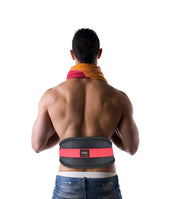
How to Measure for a Weightlifting Belt
-

Can Wrist Wraps Boost Your Grip Strength in Weightlifting?
-

Should You Use Wrist Wraps for Bench Press and Overhead Press?
-

Do Wrist Wraps Help with Wrist Pain During Strength Training? Find Out Here
-

How Can Wrist Wraps Prevent Injury During Heavy Lifting?
-

How Do You Use Weightlifting Straps: A Simple Guide for Better Lifts
-

How to Pick a Lifting Belt: A Practical Guide for Every Lifter
-

How to Measure for Lifting Belt
-
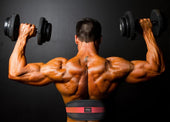
Do Weight Lifting Belts Help Lower Back Pain
-

Do I Need a Lifting Belt
-

Purpose of Weight Lifting Belt
-

When to Use a Lifting Belt
-

What Does A Lifting Belt Do
-

What Do Wrist Wraps Do For Lifting
-

How To Wrap A Wrist For Carpal Tunnel
-

How To Wrap Wrist For Pain
-

What Are Wrist Wraps For
-

How Do You Use Weightlifting Straps
-

Why Is Mental Focus Important in Powerlifting? The Key to Peak Performance
-

Can Bodybuilding Help with Fat Loss? Discover Proven Benefits
-

Mastering the Basics: How to Improve Your Powerlifting Technique
-

Why Is Proper Form Crucial in Powerlifting? Tips for Safe and Effective Lifting
-

Can Powerlifting Increase Athletic Performance? Exploring Strength Gains and Sport Benefits
-

Top Tips on How to Avoid Common Injuries in Bodybuilding
-

Why Is Recovery Essential in Bodybuilding: Key Strategies and Benefits
-

Can Powerlifting Improve Overall Fitness? Explained
-

How Many Deadlifts Should I Do?
-

How Much Can a 17 Year Old Deadlift? Average Weights and Tips
-

Why Aren’t My Arms Growing as Fast as My Chest? Top Reasons Explained
-

How to Do Back Compression Deadlift: Best Tips for Pain-Free Lifting
-

Why Is My Bench Press Not Increasing
-

Unlock Your Potential: How to Get Stronger Gradually
-

Unlock Muscle Growth: Understanding What Is the 6-12-25 Rule
-

5 Lbs of Muscle in a Month? Let's Get Real
-

Get that celebrity booty in 10 easy to do work out routines
-

A.M. vs P.M. Workouts
-

Fasting Do’s and Dont's
-

5 Surprising Sources of Protein
-

Home Workout Upgrade Must-haves
-

Top 5 Reasons You Aren’t Reaching Your Weightlifting Goals
-

Squats: A Must in Weightlifting and for Strength Training
-

Weightlifting Routines for Men, Women and Beginners









































































































































